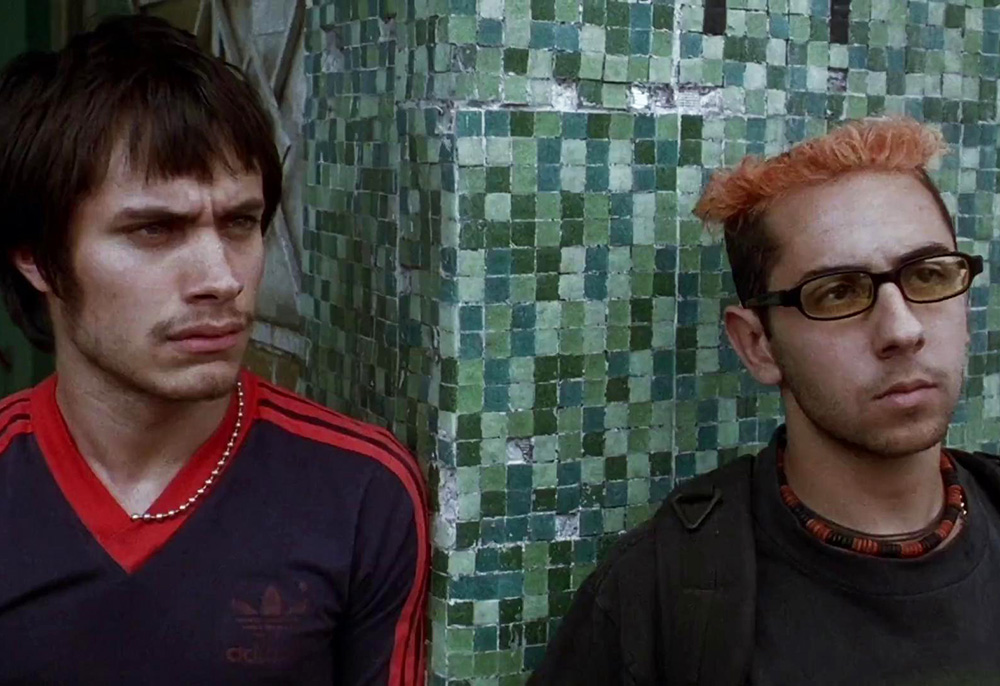Oscar-winning director Alejandro G. Iñárritu’s directorial debut “Amores Perros” is a raw, gritty, and intensely emotional depiction of the lives of different people from different sections of society. The film tells three different stories interconnected with a horrible car accident in Mexico City. Written by Guillermo Arriaga, these three stories, divided into three segments, constructed as a triptych. The stories center a teenage boy, Octavio who becomes involved in underworld dogfighting, Valeria a model, who seriously injured her leg, and a mysterious hitman, El Chivo.
Though these three stories are in a same film, it often feels you are watching three different short films, one after another, with a loose connection between them; these three stories are somehow independent in nature. But the themes of these stories are balanced in such a way that it never feels they are disoriented or disjointed. The themes of love, loyalty, inequality, and violence are recurring in all of the three stories and with each story these themes go one step further toward the final conclusion.
One of the most powerful themes of the film is loyalty as symbolized by dogs. Dogs are important to the main characters in each of the three stories, which show various forms of loyalty and disloyalty of human nature. In the first story, we can see Octavio; a teenage boy falls in love with his brother’s wife and tries to take her away some other place and save her from his brother’s domestic abuse to her. Now, here Octavio is disloyal towards to his brother to seduce his wife and persuade her to flee with him. Also, the dogs symbolize the love among the human beings. It exemplifies further as Octavio involves into in the underworld dogfighting to earn money and flee with Susana. Here the dog portrays the path of getting that love.

In the second segment, we see the bitter-sweet relationship between a higher class couple, Daniel and Valeria. We can see the two’s relationship is quite loving at first; but after their pet dog Richie falls into a hole under the floorboard and goes missing, their relationship is strained. Here the theme of loyalty or disloyalty is very profound. Having a beautiful family, Daniel is disloyal to them and keeping a mistress (Valeria) with subsequent disloyalty of Valeria, when she injures and loses her beauty in a car accident, beautifully portrayed by the loss of the dog.
By the end of the segment, we all feel the relationship is falling apart and becoming dysfunctional. Here, the two characters desperately try to find the dog, Richie, as they also try to find some hope in their relationship. And at last when Richie is found in not great condition, we somehow feel this as symbolism for Daniel and Valeria’s relationship; it becomes damaged and they don’t see each other as they used to be.
The last segment is of the mysterious hitman, El Chivo, and we find out that he is surrounded by the dogs all the time. This somehow showcases his lack of human contact and isolation from the rest of the world. From his backstory, we know he is an ex-guerilla and convict, who lives the life of a kind of exile in a dirty warehouse in the outskirts of the town.
After the car crash, he finds the injured Cofi and takes him to his warehouse and heals him. But when Cofi kills his other dogs, El Chivo sees his own reflection as a hitman in Cofi. Also, Iñárritu portrays beautifully El Chivo’s loss of loyalty to youthful idealism as he turns into a hitman by using this metaphor. At the end we can see El Chivo deny killing someone he was assigned to and instead tries to rediscover his loyalty to a daughter as a hitman that falls from—and then attempts to regain—grace.
“Amores Perros” also has a distinct commentary on the inequalities of the three different classes of people living in a same city. The severe segregation of economic classes is beautifully portrayed, showing El Chivo squatting in a dirty warehouse on the outskirts of the city, Octavio living in a working-class neighborhood, and Valeria living in a high-rise apartment. It also in a sense tells us that there are different stories present in a single city through different people. These stories are different; but when they intersect, their lives are changed ever after. It tells us that no matter whatever it takes, all lives are interconnected. Also, the use of violence is a very important aspect in the film. From domestic to gun violence, Iñárritu exemplifies the utter chaos and dysfunctional nature of the lives of his characters in a world of terrorizing cause and effect.
“Amores Perros” is Alejandro G. Iñárritu’s first feature, and in that film he takes us on a mad journey to explore how love, loyalty, inequality, and violence function in different people lives through their own perceptions. The film is a pretty hard film to watch—not only because of the dreadful imageries of violence, but also as it tells the real world in an unfiltered way.